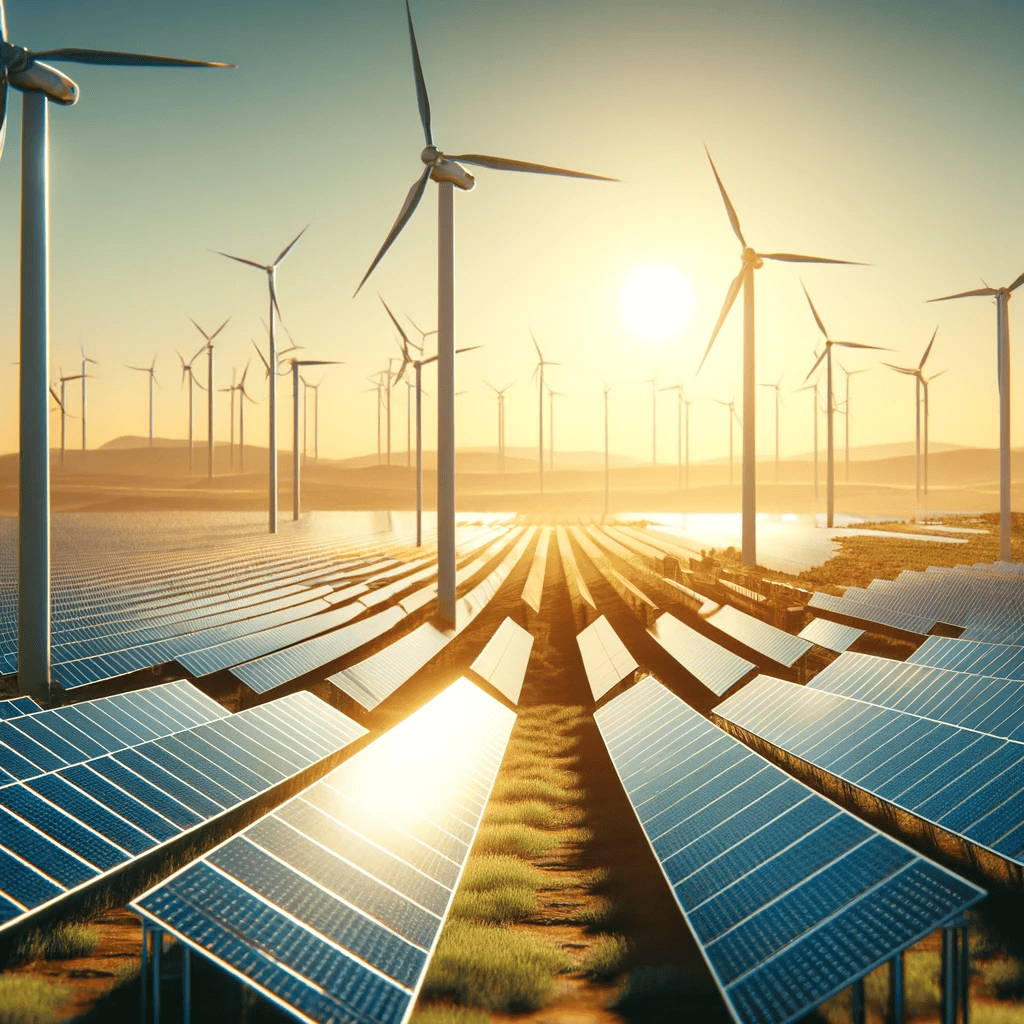Energy needs across the globe have led to the exploration of alternative sources that are renewable, efficient, and sustainable, like Solar Energy vs Wind Energy.
Africa, with its vast potential, stands at the crossroads of embracing either solar energy or wind energy as a solution to its power challenges.
In this article, we will dive into the brief history of both solar and wind energy, explore their functionality, applications for homes and commercial use, weigh their advantages and disadvantages, and finally address which option might be the best for Africa.
History of Solar Energy
Solar energy has been harnessed by humans for thousands of years, with ancient civilizations using sunlight to start fires and heat buildings.
However, the modern development of solar energy started in 1839 when French physicist Alexandre Edmond Becquerel discovered the photovoltaic effect.
This is the process by which sunlight is converted into electricity, laying the foundation for solar cells and panels as we know them today.
The photovoltaic (PV) cell was first developed in the 1950s by Bell Labs, but it wasn’t until the 1970s, during the oil crisis, that solar energy started gaining more attention as an alternative energy source.
By the late 20th century, governments and organizations worldwide began investing in large-scale solar energy production, leading to the development of solar farms and residential solar systems.
History of Wind Energy
The use of wind energy can be traced back over 5,000 years, when wind was used to power sailboats on the Nile River. Windmills, which emerged around 200 BC in Persia, were employed to grind grain and pump water.
Fast forward to the 1880s, the first wind turbine capable of generating electricity was built in Scotland by James Blyth.
Modern wind energy development took off in the late 20th century with advances in turbine technology and a growing focus on renewable energy solutions.
Wind farms now span across many countries, contributing a significant portion of global electricity generation, especially in countries with large wind resources like Denmark and the USA.
Solar Energy: How It Works
Solar energy works by capturing sunlight and converting it into electricity. Solar panels consist of photovoltaic (PV) cells, which absorb photons (light particles) from the sun. This process generates an electric current that can power homes, businesses, and even entire communities.
Commercial Solutions for Solar Energy
- Solar Farms: Large-scale solar farms have become common, particularly in regions with high sunlight exposure. These farms contain thousands of PV panels, all connected to the grid, producing energy that can power entire cities or industries.
- Rooftop Solar for Businesses: Many commercial buildings are now fitted with rooftop solar panels to reduce reliance on traditional energy sources and cut down on electricity costs.
Home Solutions for Solar Energy
- Residential Solar Panels: Homeowners can install solar panels on their rooftops to produce energy for their own use. Excess energy can be stored in batteries or sold back to the grid, depending on local regulations.
- Solar Water Heaters: These devices use the sun’s heat to warm water for residential use, reducing the need for electricity or gas.
Wind Energy: How It Works
Wind energy is generated when wind turns the blades of a turbine, which spins a rotor connected to a generator, creating electricity. Wind turbines are typically located in open areas with consistent wind patterns, such as coastal regions or plains.
Commercial Solutions for Wind Energy
- Wind Farms: Similar to solar farms, wind farms consist of multiple wind turbines generating electricity. These farms can be located on land or offshore, where wind speeds tend to be stronger.
- Hybrid Solutions: In some areas, wind farms are combined with solar farms to create hybrid renewable energy solutions, maximizing energy production.
Home Solutions for Wind Energy
- Small-Scale Wind Turbines: Homeowners can install smaller wind turbines on their properties to generate electricity. While less common than solar panels, they are an option in regions with reliable wind patterns.
- Hybrid Systems: For residential areas, a combination of wind and solar systems can provide a more consistent energy supply, especially in areas with varying weather conditions.
Pros and Cons of Solar Energy for Homes and Commercial Use
Pros of Solar Energy
- Abundant and Renewable: Sunlight is abundant and available almost everywhere, especially in sunny regions of Africa.
- Low Maintenance Costs: Solar panels require minimal maintenance, with most systems lasting up to 25 years.
- Clean Energy: Solar energy production doesn’t produce harmful emissions, making it environmentally friendly.
Cons of Solar Energy
- Initial Costs: The upfront cost of purchasing and installing solar panels can be high, though costs are steadily decreasing.
- Weather Dependence: Solar energy production drops during cloudy days or at night, requiring storage systems or grid connections.
- Space Requirements: For larger energy needs, significant space is required to install enough solar panels.
Pros and Cons of Wind Energy for Homes and Commercial Use
Pros of Wind Energy
- High Energy Potential: In regions with strong winds, wind turbines can generate large amounts of energy.
- Low Operating Costs: After installation, wind turbines have low operational costs.
- Space Efficiency: Wind turbines can coexist with agricultural land, allowing for dual land use.
Cons of Wind Energy
- Intermittent Energy: Wind energy production depends heavily on wind speeds, which can vary daily.
- Noise and Visual Impact: Wind turbines can be noisy and are often considered an eyesore, especially in residential areas.
- High Initial Investment: Like solar, wind turbines require significant initial capital to install.
Solar Energy vs Wind Energy in Africa
Africa is a continent with enormous potential for both solar and wind energy due to its vast land, high sunlight exposure, and coastal wind resources. Let’s examine how each energy source fares in an African context.
Solar Energy in Africa
Africa is one of the sunniest continents on Earth, making solar energy an attractive option. Countries like Egypt, Morocco, and South Africa have invested heavily in solar farms.
In many rural areas, solar panels are used to provide electricity where traditional grid access is not feasible.
Solar energy can play a significant role in electrifying off-grid areas, especially in sub-Saharan Africa, where millions lack access to electricity.
The decline in solar panel costs and advancements in battery storage are making solar energy a more viable option for households and businesses alike.
Wind Energy in Africa
While Africa has some regions with strong wind resources, such as parts of South Africa, Morocco, and Kenya, the wind energy potential is not as evenly distributed across the continent.
Coastal areas and certain highland regions are suitable for wind energy development, but inland areas may lack the consistent wind speeds needed for efficient electricity generation.
Kenya has emerged as a leader in wind energy with the development of the Lake Turkana Wind Power Project, which is Africa’s largest wind farm.
Wind energy is a viable option for large-scale electricity production in regions with the right conditions, but it may not be suitable for widespread adoption across the continent.
Solar Energy vs Wind Energy: Which is the Best for Africa?
When comparing solar energy and wind energy in the context of Africa, it’s clear that both have their strengths and limitations. However, solar energy emerges as the more promising solution for several reasons:
- Wider Availability: Sunlight is abundant across almost the entire African continent, while strong, consistent wind is more localized to certain regions.
- Easier Implementation: Solar panels can be installed almost anywhere, from remote rural areas to urban rooftops, making them accessible to a broader population.
- Cost-Effectiveness: Solar panel prices have decreased significantly over the years, making it a more affordable option for both commercial and residential use.
That being said, wind energy should not be overlooked. In areas where wind resources are strong, such as coastal and highland regions, wind energy can provide a reliable and renewable power source.
For countries like South Africa and Kenya, a mix of both solar and wind energy might be the most effective solution.
Conclusion
In the debate of solar energy vs wind energy, both offer viable solutions for Africa’s growing energy needs. However, given the continent’s vast solar potential, solar energy stands out as the more practical and widely applicable option.
Wind energy can still play a crucial role, especially in regions with strong wind resources, but solar energy is likely to lead the way in providing electricity to the millions of Africans who currently live without it.
By embracing these renewable energy sources, Africa can move towards a cleaner, more sustainable energy future while improving access to electricity across the continent.























